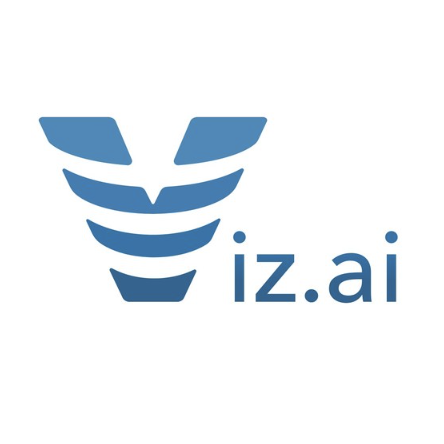
As the leading CPA firm working with VC-backed startups, we’ve helped thousands of founders understand their tax and accounting - including setting up their accounting systems and getting the right accounting method.
In this article, we’ll explain what is the best accounting method for startups raising VC funding.

The Best Accounting Method for Startups
The best accounting method for VC-backed startups is accrual accounting. Of the two types of accounting methods - cash or accrual, accrual is best
So, should a VC-backed startup opt for cash accounting or accrual accounting?
The answer is overwhelmingly in favor of the accrual method. Accrual accounting provides greater financial transparency, reliable metrics that can be used to compare the startup’s position vs. similar companies, delivers effective communication to VCs and investors and is what acquiring companies expect to see - therefore makes for faster and easier exit diligence.
This comprehensive guide explains more and offers actionable steps for implementation.
What Are Accounting Methods?
Before digging into why accrual is the best fit for VC-backed startups, it’s essential to understand what accounting methods are. These methods refer to the set of rules and guidelines used to record financial transactions and prepare financial statements. It’s basically how you record specific types of transactions in your books, and so your startup bookkeeper needs to be 100% aligned - and experienced - in the accounting method that you are using. They are crucial for understanding your business’s health, planning for the future, and making data-driven decisions. Investors and other people you’ll work with - both externally and internally - will rely on these numbers, so it’s important to follow the right method.
The Two Types of Accounting Methods
Cash Accounting
The cash accounting method records transactions only when cash changes hands. Revenue is recognized upon receipt, and expenses are recorded upon payment. While straightforward, this method fails to offer a holistic view of your financial health, especially if your business has accounts receivable or payable that haven’t been settled yet. It’s particularly important for SaaS companies, that may have tremendous differences between when revenue is collected and earned. For example, if you have your clients prepay for the year, you get a lot of cash up front. Or some biotech companies purchase large pieces of equipment that need to be capitalized. Or ecommerce companies purchase inventory upfront and then earn revenue over time as the product sells. In all of these examples, cash accounting can make it a lot harder to understand how the business is actually doing, where the company’s financial position is improving or worsening, etc. So that leads us to the other, better, type of accounting method for startups:
Accrual Accounting
Accrual accounting is a method of accounting where revenue and expenses are recorded when they are incurred, regardless of when the money is actually received or paid. This approach gives a more accurate picture of a company’s financial health by matching revenues with the expenses incurred in earning those revenues.
For example, if a business rendered services in January but didn’t receive payment until February, the revenue would still be recorded for January in accrual accounting. Similarly, if expenses for supplies were incurred in March but weren’t paid until April, those costs would be recorded in March. Accrual accounting can be complex but it allows for a more real-time understanding of a business’s financial situation. For early-stage startups looking to raise venture capital, investors expect financials to be presented in accordance with the Generally Accepted Accounting Principles, which includes accrual accounting.
What is GAAP, and Why Does It Matter?
GAAP (Generally Accepted Accounting Principles) is the universally accepted set of guidelines for financial accounting in the United States. It’s pivotal to note that GAAP operates on an accrual basis. Compliance with GAAP is often non-negotiable for venture capitalists and becomes especially crucial when your startup approaches significant milestones like funding rounds or exits.
Why Accrual Accounting is Essential for VC-Backed Startups
Financial Transparency
Accrual accounting enables full financial transparency, a vital requirement for venture capitalists who are risk-averse by nature. By accurately reflecting revenues and expenses as they are earned or incurred, you offer investors a clear picture of your actual financial performance.
Reliable Metrics
The accrual method provides you with reliable metrics and actionable insights, necessary for effective business management. Metrics like Customer Lifetime Value (CLV) and Customer Acquisition Cost (CAC), the Rule of 40 - these all require accrual based accounting. Experienced founders know that it’s easier to have actionable conversations with the team using accrual based metrics. And good luck calculating ARR if you aren’t using accrual!
Effective Communication with Venture Capital Investors
Accrual accounting, being GAAP-compliant, ensures you’re speaking the same “financial language” as your investors. This standardization simplifies the due diligence process and facilitates more productive discussions during board meetings and investment rounds. If you try to present metrics to VCs and the data hasn’t been produced using an accrual method of accounting, you are going to not only lose a lot of credibility, you are also going to have to do a lot of work to modify the underlying numbers. And heaven forbid that you try to use cash numbers during VC due diligence.
Preparing for Successful Exits
Whether it’s an Initial Public Offering (IPO) or acquisition by a larger tech company, exits require GAAP-compliant, accrual-based accounting. Many VC-backed startups that successfully exit do so by or before their Series B rounds (Carta says that their data says over 80% of VC backed startups exit before the B!). Preparing with accrual accounting from the start puts you on a faster track to a successful exit. On average we help one or two clients get acquired every month - trust us, you don’t want to be trying to convert cash to accrual when hundreds of millions of dollars are on the line.
How Can You Tell Which Accounting Method Your Accountant is Using?
For founders of VC-backed startups, understanding the method employed by your accountant or financial team is not just important, it’s mission-critical. Not only does it have implications for your day-to-day operations, but it can also significantly impact your relationships with investors and even the exit strategy of your startup.
Besides asking your bookkeeper, here are some other tips for figuring out which method your accountant is using.
- Look for AP and AR on your balance sheet. Accounts receivable and accounts payable are items that don’t show up in cash books - so check your balance sheet to see if either of these two items are showing up on your balance sheet.
- Compare expenses on the income statement with the cash flow statement. If you’re using cash accounting, the income and expenses on your financial statements will align precisely with cash inflows and outflows - and may not in the accrual method (accounts payable and receivable again!)
- Revenue recognition. The timing of when you recognize revenue is a big tell, especially for SaaS businesses. For the accrual method, it’s not when the cash hits your bank, but when you deliver the service or product. Especially for SaaS companies, if your revenue jumps up and down, you may be getting cash books.
Actionable Steps for Implementation
Consult Your CPA: Seek advice from a qualified CPA who understands the startup ecosystem - like us here at Kruze.
Choose the Right Software: Opt for accounting software that supports accrual accounting and can generate GAAP-compliant reports. We recommend QuickBooks Online.
Regular Review: Regularly consult your financials and work closely with your CPA to make sure your numbers are being accurately recorded. For example, most Kruze clients take advantage of recurring, monthly calls with our team to go over their numbers. Don’t wait until tax season to figure this out!
Get Investor Advice: Keep your investors up to date on your numbers by regularly sharing top line numbers, and by sharing your detailed, three financial statements. Ask them if you are following in the path of their best investments; the most experienced investors will know if a startup’s numbers are making sense.








